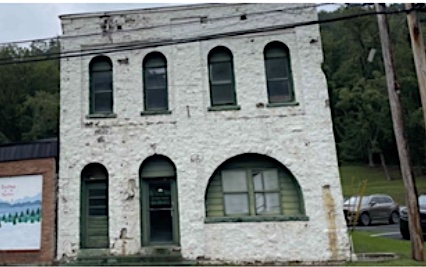Review board will meet Tuesday, October 30 to consider 12 nominations to the National Register of Historic Places
The National Register is the nation’s official list of historic and archaeological resources deemed worthy of preservation.
FRANKFORT, Ky. (October 18, 2023) – Twelve sites will be considered on October 30 for listing in the National Register of Historic Places. The Kentucky Historic Preservation Review Board will hear presentations on these nominations at 10:30 a.m. ET at the Paul Sawyer Public Library located at 319 Wapping Street in Frankfort.
The review board is charged with evaluating and recommending National Register submissions from Kentucky. The program is administered by the Kentucky Heritage Council/State Historic Preservation Office in partnership with the National Park Service (NPS). Following review board deliberation, NPS will have 45 days from receipt to issue a final determination of National Register listing.
Established in 1895 and later expanded in 1915, the St. Elmo School, is the sole known school within Christian County that has retained its original location since the early days of education. The school’s existence reflects the Christian County School Board’s commitment to enhancing the educational standards for children by consolidating smaller, underfunded educational institutions.
The Green Hill Missionary Baptist Church holds historical significance for the African American community in Franklin County. Its architecture includes a one-story structure with a front-gabled roof crowned by a steeple. This church serves as a valuable testament to the historical development patterns of Black communities in rural Franklin County and remains a vital and central institution within the present-day community.
Designed in the early 20th century Commercial style, John G. Epping Bottling Works in Jefferson County was a soft drink processing complex that was significant in Louisville’s general industrial and commercial history. As an early soft drink manufacturer, Epping Bottling grew to a regional operation, adapting to new markets with new products and technologies.
Also in Jefferson County, the former Great Atlantic and Pacific Tea Company Bakery and Warehouse is a utilitarian four-story, early 20th century industrial building. Its significance lies in the early 20th revolution in the food industry and grocery commerce in Louisville, paralleling those trends nationally.
The Louisville Lead & Color Co. Paint Factory & Warehouse, located in Jefferson County, comprises a single structure composed of a four-story brick building dating back to approximately 1905, and a five-story brick addition from around 1911. This facility held local significance within the Portland neighborhood as a source of employment and was of importance to consumers due to its wide range of products.
Between 1925 and 1977, the residents of Lee County underwent a transformation in their sense of identity. Previously centered solely around their local community, they gradually started associating various aspects of their lives with Beattyville. This shift was driven by an increasing number of interactions in areas like education and commerce that occurred within the town. The Beattyville Historic Districtencompasses many of the structures that played a pivotal role in facilitating this transition, including commercial, governmental, civic, office, medical, religious, and residential buildings.

Built in 1923, the former Inez Deposit Bank is a two-story, sandstone building standing on the Main Street of Inez that has maintained its historic footprint. It became the first bank established in Martin County 1904, which is an important event marking the time when the County was viewed by entrepreneurs, professionals, and resource capitalists as a place of great potential.
In Muhlenberg County, the Edward Taylor House was built in 1911 as the residence for local attorney E. A. Taylor and his wife, Annie Taylor. Relatively few changes have occurred to the property since its construction in 1911. The building’s full-length porch with Doric-style columns supporting a pedimented gable porch are hallmarks of the Neoclassical Revival style.
The Wilson Samuels House in Nelson County is a federal style house, built by Samuels circa 1835-1845. Samuels was an important individual in local commerce as the operator of the Samuels General Store in Samuels, Kentucky. As a prominent member of the community, Samuels used his dwelling as the center of his commerce and his social life.
The H.M. Smith General Merchandise and Fonthill Post Office serves as an illustration of a rural country store with an attached post office dating back to the early 20th century. It symbolizes the influence these establishments had on both the commercial and social aspects of rural agricultural communities in Russell County from 1914 to 1973. This site was recognized as a Kentucky Landmark in 2003.
From the time the Memorial Gym in Perry County was built in 1951, until 1990, the facility was used by the county’s various high schools until those schools built their own gymnasiums. The building is being interpreted for its role as a social and entertainment center and offers insight on how the schools used it to engage in an unusual local model of power sharing.
In Trigg County, the George and Nellie White Smith House is a two-story house built in 1900 in the Queen Anne style and can be seen as the most elaborate localized version of Victorian-era design in Cadiz, and all of Trigg County. The Smith House shares all the features of a local architectural context, including wood frame and wood clapboard walls.
The National Register is the nation’s official list of historic and archaeological resources deemed worthy of preservation. The meeting is open to the public. An agenda, complete draft nominations, and photos are available at www.heritage.ky.gov.
# # #
An agency of the Kentucky Tourism, Arts and Heritage Cabinet, the Kentucky Heritage Council/State Historic Preservation Office is responsible for the identification, protection and preservation of prehistoric resources and historic buildings, sites and cultural resources throughout the commonwealth, in partnership with other state and federal agencies, local communities and interested citizens.
|